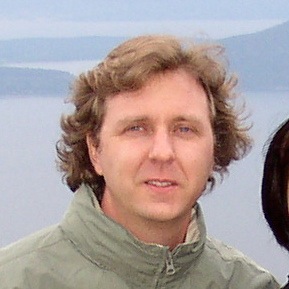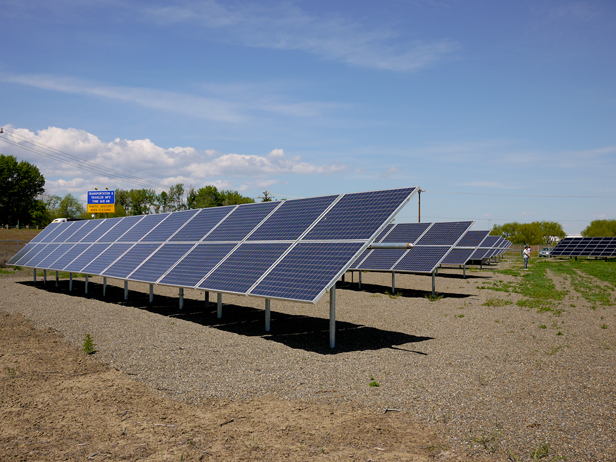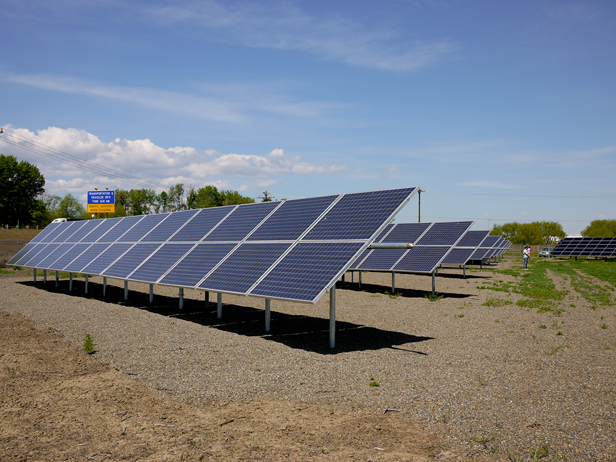 Photo courtesy of Gary ShaverWhen the city of Ellensburg asked the Washington State University energy program for help designing a community solar project, the state folks weren’t sure the city folks were serious. At the time, just a few years ago, solar projects were few and far between. But WSU energy consultant Gary Shaver jumped on board, helping with everything from financing to choosing the right solar panels. Now he’s president of Silicon Energy, which manufactures solar energy panels and inverters in Marysville, Wash.
Photo courtesy of Gary ShaverWhen the city of Ellensburg asked the Washington State University energy program for help designing a community solar project, the state folks weren’t sure the city folks were serious. At the time, just a few years ago, solar projects were few and far between. But WSU energy consultant Gary Shaver jumped on board, helping with everything from financing to choosing the right solar panels. Now he’s president of Silicon Energy, which manufactures solar energy panels and inverters in Marysville, Wash.
Q. Did the city know right away how they wanted to design the project, or was there a lot of brainstorming?
A. There was a lot of brainstorming. This was back in 2005, and at that time, there was really no incentive to do solar, so it was pretty exciting that Ellensburg wanted to do this. In fact, myself and the Washington State University energy program thought, “Wow, is the city really serious about doing this?” because you hear a lot of people talking about wanting to do solar, but at that time, it was very rare for anybody to do anything.
Q. Why was that?
A. When you’re looking at the cost effectiveness of solar, people weren’t valuing solar, so they would compare it up against the cost of, say, coal-fired generated electricity. It was just a really hard one. There were no incentives to speak of. The state had no solar incentive, other than it had net metering.
What was impressive was that [Ellensburg resources manager] Gary Nystedt was really committed to it, and as I soon learned, there was just a lot of backing in the city. As a community, they wanted to do this. It wasn’t the economics as much as it was community development, the community spirit. That’s what really impressed me so much about the project. It has a real community feel to it.
Q. How did you figure out the solar technology — what type of panels to use, how many, and how to tie it into the grid?
A. That was part of the research at the time — what technologies were out there. It was pretty well-established even then that a crystalline module technology was good. And the city of Ellensburg wanted something very durable. You could narrow down pretty quickly the modules to use. Design, the racking for the system — again, that was something that had been done for many, many years. So that wasn’t a difficult one. But at the time, for this project, of its size, there weren’t a lot of inverter choices. [Solar panels generate direct current energy (DC). Inverters change that to alternating current (AC).] Even in 2005, a lot of people had questions about the durability, the longevity of solar — even though the industry had shown by that time that a lot of these products were already well-established and good. When you’re trying to reach out to the mainstream, people have to learn this stuff all over again.
 Ellensburg went through that. Gary Nystedt was really good with that. The city — they were just very supportive. It was really surprising — I mean, a very pleasant surprise. It’s one of those situations where people know what they want to do. They know what’s right. And they’re going to overcome obstacles — in this case, maybe it was the financing part of it — and make it happen. That’s what’s really exciting. That’s what really drives innovation. Instead of sitting back and wringing your hands about how much it’s going to cost. That’s innovation.
Ellensburg went through that. Gary Nystedt was really good with that. The city — they were just very supportive. It was really surprising — I mean, a very pleasant surprise. It’s one of those situations where people know what they want to do. They know what’s right. And they’re going to overcome obstacles — in this case, maybe it was the financing part of it — and make it happen. That’s what’s really exciting. That’s what really drives innovation. Instead of sitting back and wringing your hands about how much it’s going to cost. That’s innovation.
Q. Ellensburg was the first community solar project. Was it difficult not to have any other models for what you wanted to do?
A. Absolutely. There were no models to follow, there were no incentives, really, to speak of. It was very much uncharted territory.
Q. Did you know at the time that it would take off the way it has?
A. You can never know these things. Originally, I was asking that when we market it, that it be done conservatively, be careful, make sure it was succeeding. It was a great surprise to me to see that the city really responded well beyond what I had hoped.
You can become jaded. Even though you know a technology is something that should be used — even though you know that if it’s properly valued, it should be used — when you’re up against entrenched institutional ideas on valuing something, it kind of jades you. It was a pleasant surprise to see Ellensburg overcome those typical barriers.
Q. What were some of the toughest nuts to crack during the project?
A. When you’re bringing in a technology like solar, it’s a disruptive technology. It’s disruptive to organizations as well. An organization can be bureaucratic and solidified into a certain path. And [that path] has an efficiency to it. When you inject something new — even though, again, it’s the right thing to do, or it’s a highly efficient thing to do — institutionalized thinking can kill lots of great ideas just because they’re new and different. Ellensburg, thankfully, was pretty much embracing throughout. But there were challenges in figuring out how to make it work and every once in a while you’d hit obstacles like, “We’ve never done this before.” Those are the challenges. It’s mostly us overcoming our experiences to allow for new things to be implemented. So there was a little bit of that. And then the challenge of financing. How do you reduce the cost of this for people to feel that they can access it and feel comfortable with making the investment?
Q. What role do you think a project like Ellensburg has in the future of solar energy? Is the future more community projects like this, or is it households having their own panels?
A. The discussion used to be, “Is it wind or is it solar?” And actually they complement each other. Wind typically blows at night. So in the day, solar works. And also on days when there’s no wind during the day, solar works. And on the days when there’s no sun, wind works. So they complement each other. It’s the same with community projects and households. There’s going to be a mix. There will be people that do not have access, for whatever reason, whether it’s financial or whether their rooftop isn’t the proper orientation. That’s where community solar is nice. But really the most efficient thing is to spread that solar out as widely as possible. So if every home, every building, was generating electricity, that would be a highly efficient, robust energy system.
To make another metaphor, it’s like a portfolio — although all portfolios right now aren’t doing so hot — you want to mix that risk, you want to have a mix of things. So there’s going to be community solar, there’s going to be individual solar. They go hand in hand.



